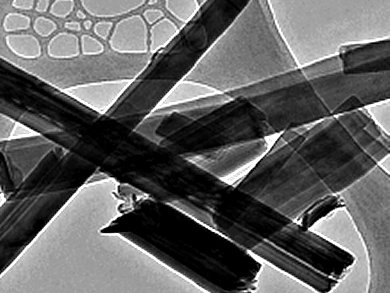The increasing importance of renewable energy makes it necessary to provide part of the balancing energy by electric storage systems. One possibility is the electrochemical capacitive storage in supercapacitor devices. They offer faster charge and discharge operations, longer cycle life, and significantly higher power densities than batteries.
Carbon-based materials as well as pseudocapacitive transition metal oxides (TMOs) have been considered as electrode materials in supercapacitor devices.
Xiaowei Teng, University of New Hampshire, NH, USA, report a simple two-step method to synthesize one-dimensional V2O5 nanofibers (VNFs) for pseudocapacitor applications. In a first step, VOx precursors were prepared by reacting potassium hydroxide with vanadyl(IV) sulfate hydrate in an aqueous solution at room temperature. In a second step, the resulting VOx precipitate was dried, ground, and heated to 450 °C for 2 h in air to form the final product K0.33V2O5 VNF.
The team demonstrated that asymmetric potassium-ion capacitors in aqueous electrolyte exhibited a superior capacitive retention rate of 98 % over 5000 charge-discharge cycles by using a K0.33V2O5/poly (3,4-ethylenedioxythiophene) (PEDOT) composite electrode as an anode and PEDOT as a cathode. The study provides the first evidence of a direct in situ observation of potassium-ion storage in the interplanar spaces of the VNF layers by using an electrochemical cell. The wide layer-to-layer distance in VNFs allowed for the facile and reversible insertion/extraction of potassium ions and water molecules and fast electron transfer.
The researchers think that potassium-ion-based aqueous energy storage devices can provide an attractive and cost-effective alternative for a wide range of applications.
- Storage of Potassium Ions in Layered Vanadium Pentoxide Nanofiber Electrodes for Aqueous Pseudocapacitors,
Matthew P. Yeager, Wenxin Du, Brendan Bishop, Matthew Sullivan, Wenqian Xu, Dong Su, Sanjaya D. Senanayake, Jonathan Hanson, Xiaowei Teng,
ChemSusChem 2013.
DOI: 10.1002/cssc.201300480



